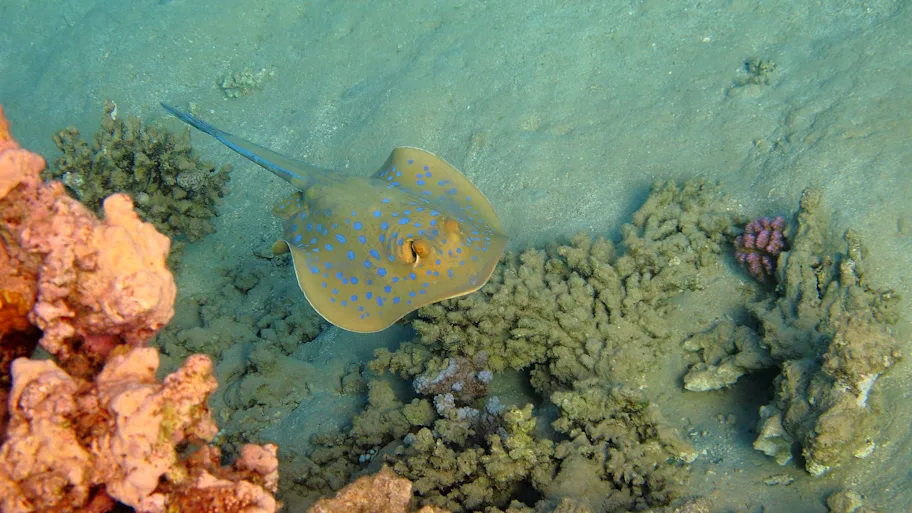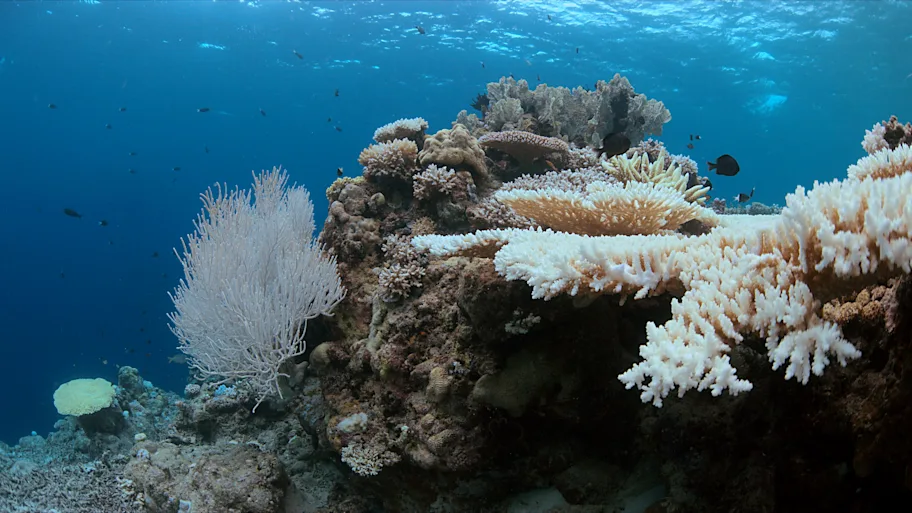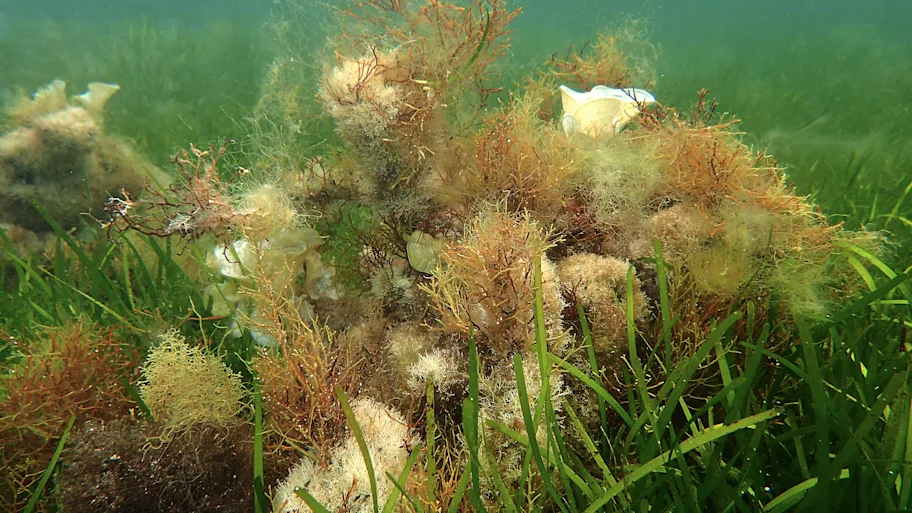
- Science news
- Featured news
- Chlorine and cocoa butter could protect corals from disease and decrease antibiotic pollution of the oceans
Chlorine and cocoa butter could protect corals from disease and decrease antibiotic pollution of the oceans

In coral reefs, tissue loss diseases are widely spread. Treatment options are available but vary in their effectiveness and might have an impact on their surroundings. Now, researchers have tested an alternative to antibiotic treatments and showed that a chlorine and cocoa butter paste mix is effective at containing stony coral tissue loss disease. This non-antibiotic treatment could be a first step to improve environmental conditions in reefs, which ultimately could lead to corals being able to fight pathogens without treatment.
In the tropical Atlantic, stony coral tissue loss disease (SCTLD) is particularly severe because the disease is transmitted quickly, spreads to many hosts, and results in high mortality rates. Treatment methods to stop the spread of SCTLD are available; the most common is the use of antibiotics. This, however, comes with side effects like increased antibiotic resistance.
Now, an international team of researchers has investigated if an alternative, antibiotic-free approach to treating infected corals could help avoid antibiotic pollution of the world’s oceans and improve coral health.
“Our study shows that direct treatment of SCTLD can help corals survive a disease outbreak and highlights that active management of disease is possible in the field,” said Dr Greta Aeby, a researcher at Qatar University and senior author of the study published in Frontiers in Marine Science. “Antibiotic pollution is a problem worldwide, so we’re working to develop a non-antibiotic treatment that would slow down tissue loss diseases.”
Antibiotics vs chlorine
The researchers compared the effectiveness of different treatments by applying them to infected corals of Horseshoe Reef, near the British Virgin Islands. Some corals were treated with amoxicillin, an antibiotic; others were treated with a paste mixed from chlorine and cocoa butter.
“In this mix, the active ingredient is sodium hypochlorite, an antiseptic commonly used to kill bacteria or viruses. The chlorine powder we used in our treatment is the same used to kill germs in swimming pools. The cocoa butter was just the delivery mechanism allowing us to spread the chlorine on the coral lesions,” explained Aeby.
The researchers applied both treatments directly to corals and re-visited the reef every four or five weeks to measure and describe lesions and to reapply the treatment as necessary. After roughly 80 days, the median percentage of tissue lost was 17.6% for chlorine-treated colonies and 1.7% for amoxicillin-treated colonies.
Read and download the original article
Environmentally friendly
While the antibiotic treatment was more successful at containing SCTLD, the researchers said that unwanted side effects, such as the development of antibiotic-resistant bacteria, could be lessened when opting for the chlorine treatment. Antibiotic-resistant bacteria do not only affect corals, they said. “Any organism – crabs, fish, even humans – in that same environment has a higher risk of encountering bacteria that are now antibiotic-resistant,” explained Aeby.
While antibiotic treatments greatly impact the environment, the chlorine and cocoa butter paste mixture biodegrades easily, and the chlorine naturally deactivates within a day.
An added benefit is that it is much cheaper to produce – ingredients can be found in drug and hardware stores. “The antibiotic paste is not only tedious to produce, it also is often too expensive for conservationists, who operate with minimal funding on Caribbean islands,” said Argel Horton, a marine biologist at the Ministry of Environment, Natural Resources and Climate Change of the British Virgin Islands.

Protecting oceans vital to coral health
The researchers said that not all corals responded equally well to the treatments. There also are many more coral species in different regions that haven’t been included in the study. They hope that future research will test the effectiveness of different treatment methods elsewhere.
“Disease treatment can help manage a disease, but it will not remove the disease from the coral populations,” said Aeby. Direct treatments can decrease the pathogen load in the environment, but treating coral colonies like done in study – individually and by hand – is not feasible in the long-term or on a large scale.
“The best strategy would be to improve environmental conditions so that corals have a better chance of fighting disease themselves. This includes cleaning up water pollution and rebalancing the ecosystem,” Aeby pointed out.
REPUBLISHING GUIDELINES: Open access and sharing research is part of Frontiers’ mission. Unless otherwise noted, you can republish articles posted in the Frontiers news site — as long as you include a link back to the original research. Selling the articles is not allowed.






